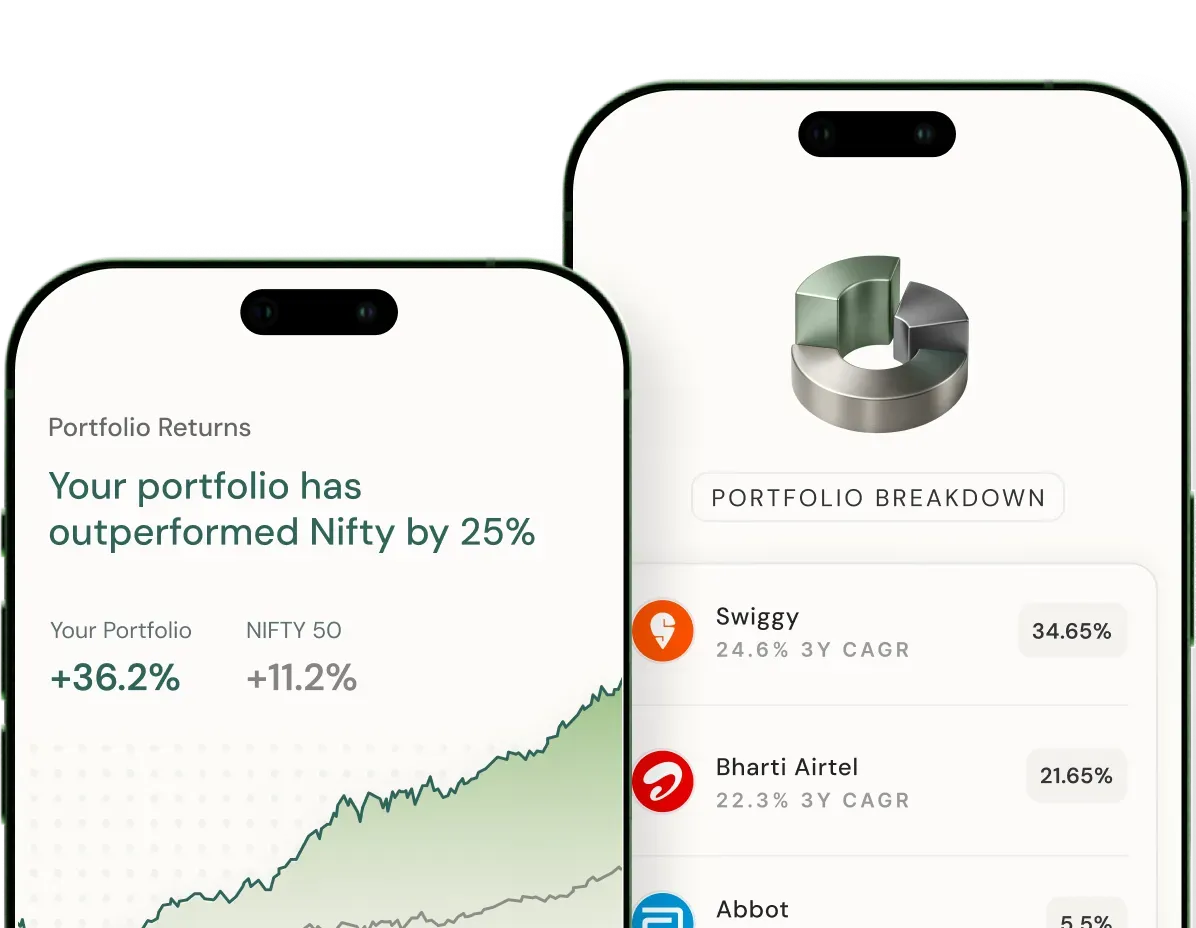Table of Contents
View All ![]()

View All ![]()
Why Alpha and Beta Ratios Are Important?
How Alpha and Beta Impact Your Investment Portfolio
Calculation of Alpha and Beta Ratios in Mutual Funds
Conclusion
If you’re investing in mutual funds, you’ve probably heard of the terms “Alpha” and “Beta.” But what do they actually mean? Alpha and Beta are metrics that help you assess how a fund performs compared to the market. These ratios give you valuable insights into the risk and return characteristics of a fund. Alpha evaluates a mutual fund’s performance relative to its benchmark index, while Beta assesses the fund’s volatility or risk in comparison to the broader market.
This blog will explain what Alpha and Beta are, how they impact your investment decisions, and how you can calculate them.
Understanding Alpha and Beta ratios is important because they help you assess how well a mutual fund performs and the level of risk it carries. These ratios provide insights into a fund’s ability to beat the market and how much risk you’re taking with your investment.
Evaluating Fund Performance
Measuring Risk with Beta
Creating a Balanced Investment Strategy

Balancing Alpha and Beta is key to shaping your investment strategy. Here’s how they influence your decisions:
High Alpha, High Beta
For investors who are willing to take on more risk to earn higher returns, funds with high Alpha and Beta are a good choice. These funds may experience bigger ups and downs but could lead to greater rewards in the long run.
High Alpha, Low Beta
This combination is ideal for those who want a fund that consistently outperforms the market without dealing with large price swings. It offers the potential for good returns with less risk compared to high Beta funds.
Low Alpha, High Beta
These funds can be risky without offering substantial returns over the market. Investors who want aggressive growth might consider them, but it’s best to avoid them if you are looking for stability and solid performance.
Low Alpha, Low Beta
If you’re risk-averse and prefer stable returns over time, this is the right choice. These funds are less affected by market fluctuations and offer steady performance, making them great for conservative investors.
Also Read: Stock Market Terminology – Learn Stock Market Basics in India
You may be curious about how Alpha and Beta are actually calculated. Let’s break it down into simple steps.
Alpha shows how much a mutual fund’s return exceeds or falls short of its expected return based on market movements. To calculate Alpha, you subtract the expected return (based on the fund’s Beta) from the actual return. Here’s the formula:
Alpha = Actual Return − (Risk-Free Rate + β × Market Return)
Beta measures how a fund’s return fluctuates in relation to the market’s return. A Beta of 1 means the fund moves in sync with the market, while a Beta greater than 1 indicates higher volatility. The formula for calculating Beta is:
β = Covariance of the Fund’s Returns with the Market / Variance of the Market’s Returns
Alpha and Beta ratios are essential tools for evaluating mutual funds. They provide a clear picture of a fund’s risk and performance relative to the market. By understanding these metrics, you can make better investment decisions that align with your financial goals and risk tolerance. Always remember to look at both Alpha and Beta when comparing different funds. They help to create a well-balanced portfolio that suits your investment style.

A seasoned investment professional with over 17 years of experience in AIF and PMS operations, investments, and research analysis. Abhishek holds an Executive MBA from the Faculty of Management Studies, University of Delhi, and has deep expertise in securities analysis, portfolio management, financial analytics, reporting and derivatives.
Disclaimer: This information is for general information purposes only. Investments in the securities market are subject to market risks, read all the related documents carefully before investing.
Impress your coworkers with your finance insights


20 MinsMutual Funds
A Beginner's Guide to Mutual Funds in 2024

8 MinsSIPs
How SIPs Help You Beat the Market with Rupee Cost Averaging

11 MinsSIPs
SIP vs. Lumpsum Mutual Fund Returns: Which is Better?
Scan this QR to download the App

